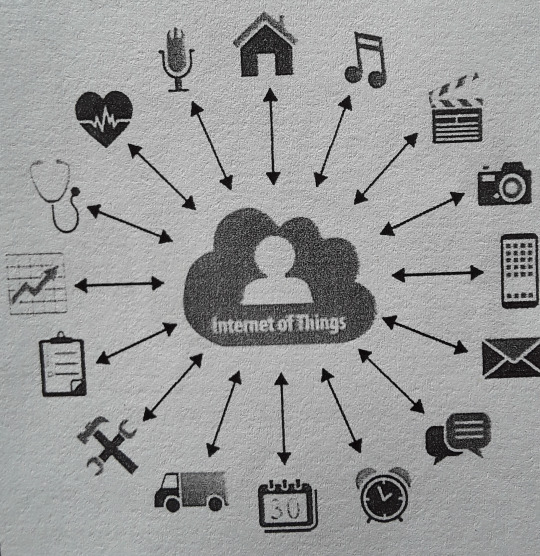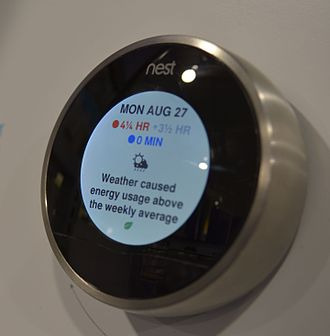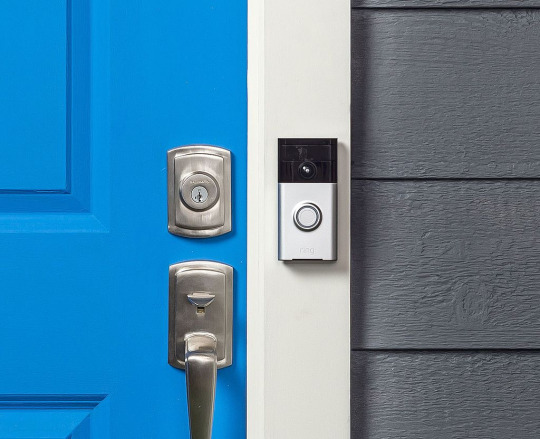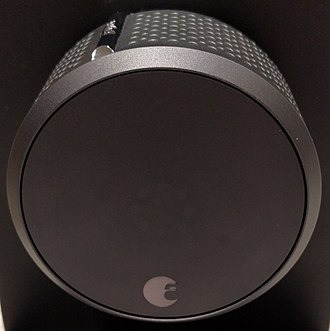Don't wanna be here? Send us removal request.
Text
INTERNET OF THINGS(IOT)
The definition of the Internet of things has evolved due to the convergence of multiple technologies, real-time analytics, machine learning, commodity sensors, and embedded systems.[1] Traditional fields of embedded systems, wireless sensor networks, control systems, automation (including home and building automation), and others all contribute to enabling the Internet of things. In the consumer market, IoT technology is most synonymous with products pertaining to the concept of the "smart home", covering devices and appliances (such as lighting fixtures, thermostats, home security systems and cameras, and other home appliances) that support one or more common ecosystems, and can be controlled via devices associated with that ecosystem, such as smartphones and smart speakers.
There are a number of serious concerns about dangers in the growth of IoT, especially in the areas of privacy and security, and consequently industry and governmental moves to address these concerns have begun.
History
The main concept of a network of smart devices was discussed as early as 1982, with a modified Coca-Cola vending machine at Carnegie Mellon University becoming the first Internet-connected appliance, able to report its inventory and whether newly loaded drinks were cold or not.Mark Weiser's 1991 paper on ubiquitous computing, "The Computer of the 21st Century", as well as academic venues such as UbiComp and PerCom produced the contemporary vision of the IoT. In 1994, Reza Raji described the concept in IEEE Spectrum as "[moving] small packets of data to a large set of nodes, so as to integrate and automate everything from home appliances to entire factories".Between 1993 and 1997, several companies proposed solutions like Microsoft's at Work or Novell's NEST. The field gained momentum when Bill Joy envisioned device-to-device communication as a part of his "Six Webs" framework, presented at the World Economic Forum at Davos in 1999.
The term "Internet of things" was likely coined by Kevin Ashton of Procter & Gamble, later MIT's Auto-ID Center, in 1999, though he prefers the phrase "Internet for things". At that point, he viewed radio-frequency identification (RFID) as essential to the Internet of things,which would allow computers to manage all individual things.
Defining the Internet of things as "simply the point in time when more 'things or objects' were connected to the Internet than people", Cisco Systems estimated that the IoT was "born" between 2008 and 2009, with the things/people ratio growing from 0.08 in 2003 to 1.84 in 2010.
The key driving force behind the Internet of things is the MOSFET (metal-oxide-semiconductor field-effect transistor, or MOS transistor),which was originally invented by Mohamed M. Atalla and Dawon Kahng at Bell Labs in 1959.The MOSFET is the basic building block of most modern electronics, including computers, smartphones, tablets and Internet services. MOSFET scaling miniaturization at a pace predicted by Dennard scaling and Moore's law has been the driving force behind technological advances in the electronics industry since the late 20th century. MOSFET scaling has been extended into the early 21st century with advances such as reducing power consumption, silicon-on-insulator (SOI) semiconductor device fabrication, and multi-core processor technology, leading up to the Internet of things, which is being driven by MOSFETs scaling down to nanoelectronic levels with reducing energy consumption.

Privacy and security concern :
As for IoT, information about a user's daily routine is collected so that the “things” around the user can cooperate to provide better services that fulfill personal preference. When the collected information which describes a user in detail travels through multiple hops in a network, due to a diverse integration of services, devices and network,the information stored on a device is vulnerable to privacy violation by compromising nodes existing in an IoT network.
For example, on 21 October 2016,a multiple distributed denial of service (DDoS) attacks systems operated by domain name system provider Dyn, which caused the inaccessibility of several websites, such as GitHub, Twitter, and others. This attack is executed through a botnet consisting of a large number of IoT devices including IP cameras, gateways, and even baby monitors.
Fundamentally there are 4 security objectives that the IOT system requires:(1)data confidentiality: unauthorized parties cannot have access to the transmitted and stored data.(2)data integrity: intentional and unintentional corruption of transmitted and stored data must be detected.(3)non-repudiation: the sender cannot deny having sent a given message.(4)data availability: the transmitted and stored data should be available to authorized parties even with the denial-of-service (DOS) attacks
IoT adoption barriers :
Lack of interoperability and unclear value proposition
Despite a shared belief in the potential of the IoT, industry leaders and consumers are facing barriers to adopt IoT technology more widely. Mike Farley argued in Forbes that while IoT solutions appeal to early adopters, they either lack interoperability or a clear use case for end-users. A study by Ericsson regarding the adoption of IoT among Danish companies suggests that many struggle "to pinpoint exactly where the value of IoT lies for them".
Privacy and security concerns
As for IoT, information about a user's daily routine is collected so that the “things” around the user can cooperate to provide better services that fulfill personal preference. When the collected information which describes a user in detail travels through multiple hops in a network, due to a diverse integration of services, devices and network,the information stored on a device is vulnerable to privacy violation by compromising nodes existing in an IoT network.
For example, on 21 October 2016,a multiple distributed denial of service (DDoS) attacks systems operated by domain name system provider Dyn, which caused the inaccessibility of several websites, such as GitHub, Twitter, and others. This attack is executed through a botnet consisting of a large number of IoT devices including IP cameras, gateways, and even baby monitors.
Fundamentally there are 4 security objectives that the IOT system requires:(1)data confidentiality: unauthorized parties cannot have access to the transmitted and stored data.(2)data integrity: intentional and unintentional corruption of transmitted and stored data must be detected.(3)non-repudiation: the sender cannot deny having sent a given message.(4)data availability: the transmitted and stored data should be available to authorized parties even with the denial-of-service (DOS) attacks.
Applications :
Nest
learning thermostat reporting on energy usage and local weather
Ring
doorbell connected to the Internet
An
August Home
smart lock connected to the Internet
The extensive set of applications for IoT devices is often divided into consumer, commercial, industrial, and infrastructure spaces.
Consumer applicationS
A growing portion of IoT devices are created for consumer use, including connected vehicles, home automation, wearable technology, connected health, and appliances with remote monitoring capabilities.
Smart home
IoT devices are a part of the larger concept of home automation, which can include lighting, heating and air conditioning, media and security systems. Long-term benefits could include energy savings by automatically ensuring lights and electronics are turned off.
A smart home or automated home could be based on a platform or hubs that control smart devices and appliances. For instance, using Apple's HomeKit, manufacturers can have their home products and accessories controlled by an application in iOS devices such as the iPhone and the Apple Watch. This could be a dedicated app or iOS native applications such as Siri. This can be demonstrated in the case of Lenovo's Smart Home Essentials, which is a line of smart home devices that are controlled through Apple's Home app or Siri without the need for a Wi-Fi bridge.[31] There are also dedicated smart home hubs that are offered as standalone platforms to connect different smart home products and these include the Amazon Echo, Google Home, Apple's HomePod, and Samsung's SmartThings Hub. In addition to the commercial systems, there are many non-proprietary, open source ecosystems; including Home Assistant, OpenHAB and Domoticz.
Elder care
One key application of a smart home is to provide assistance for those with disabilities and elderly individuals. These home systems use assistive technology to accommodate an owner's specific disabilities. Voice control can assist users with sight and mobility limitations while alert systems can be connected directly to cochlear implants worn by hearing-impaired users.They can also be equipped with additional safety features. These features can include sensors that monitor for medical emergencies such as falls or seizures.Smart home technology applied in this way can provide users with more freedom and a higher quality of life.
The term "Enterprise IoT" refers to devices uSed in business and corporate settings. By 2019, it is estimated that the EIoT will account for 9.1 billion devices
Commercial application and Medical and healthcare :
The Internet medical things (IoMT) is an application of the IoT for medical and health related purposes, data collection and analysis for research, and monitoring.[38][39][40][41][42] The IoMT has been referenced as "Smart Healthcare",[43] as the technology for creating a digitized healthcare system, connecting available medical resources and healthcare services.[citation needed][44]
IoT devices can be used to enable remote health monitoring and emergency notification systems. These health monitoring devices can range from blood pressure and heart rate monitors to advanced devices capable of monitoring specialized implants, such as pacemakers, Fitbit electronic wristbands, or advanced hearing aids. Some hospitals have begun implementing "smart beds" that can detect when they are occupied and when a patient is attempting to get up. It can also adjust itself to ensure appropriate pressure and support is applied to the patient without the manual interaction of nurses. A 2015 Goldman Sachs report indicated that healthcare IoT devices "can save the United States more than $300 billion in annual healthcare expenditures by increasing revenue and decreasing cost." Moreover, the use of mobile devices to support medical follow-up led to the creation of 'm-health', used analyzed health statistics."

A Nest learning thermostat reporting on energy usage and local weather

A Ring doorbell connected to the Internet

An August Home smart lock connected to the Internet .
Infrastructure applications :
Monitoring and controlling operations of sustainable urban and rural infrastructures like bridges, railway tracks and on- and offshore wind-farms is a key application of the IoT. The IoT infrastructure can be used for monitoring any events or changes in structural conditions that can compromise safety and increase risk. The IoT can benefit the construction industry by cost saving, time reduction, better quality workday, paperless workflow and increase in productivity. It can help in taking faster decisions and save money with Real-Time Data Analytics. It can also be used for scheduling repair and maintenance activities in an efficient manner, by coordinating tasks between different service providers and users of these facilities. IoT devices can also be used to control critical infrastructure like bridges to provide access to ships. Usage of IoT devices for monitoring and operating infrastructure is likely to improve incident management and emergency response coordination, and quality of service, up-times and reduce costs of operation in all infrastructure related areas. Even areas such as waste management can benefit from automation and optimization that could be brought in by the IoT.
1 note
·
View note